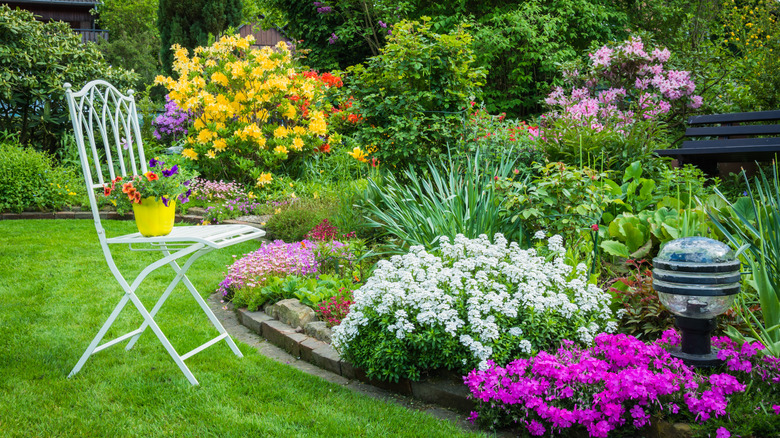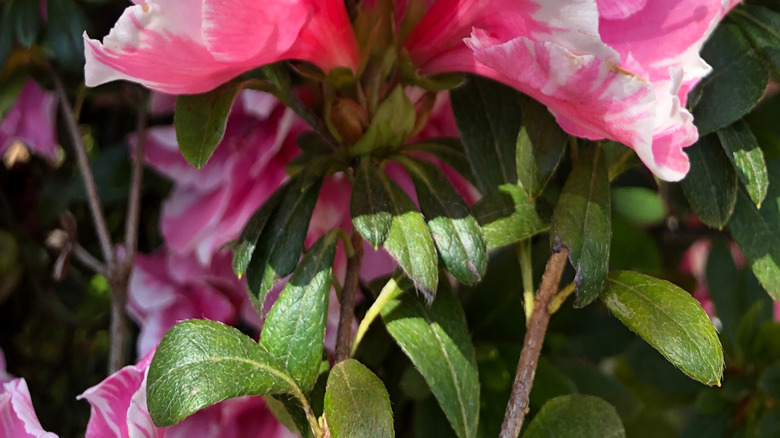The Popular Gorgeous Flower You May Want To Avoid Growing In Your Garden
There is one popular flower you may want to avoid growing in your garden — and not because it isn't beautiful. These flowers are beloved for their vibrant spring blooms, attracting pollinators and bringing color to shady garden spots. But their good looks often mask how demanding they really are. Many varieties are slow to grow, sensitive to soil and water conditions, and prone to disease. If low-maintenance gardening is your goal, certain azalea (Rhododendron) shrubs can quickly become more frustrating than rewarding.
There are many types of azaleas you can grow in your garden, but some come with steeper requirements than others. Torch azalea (Rhododendron kaempferi) and pinkshell azalea (Rhododendron vaseyi) are moderately manageable with medium maintenance needs, yet even these slow-growing shrubs can be toxic and picky.
More challenging still are Southern Indian azalea (Rhododendron indicum) and Kurume azalea (Rhododendron ponticum). Both demand partial shade, acidic and well-drained soil, and consistent moisture, without tolerance for drought, heavy soil, or overfertilizing. These shrubs won't grow well unless planted in the best spot in your garden for azaleas.
Why you should skip these high-maintenance azalea varieties
Southern Indian and Kurume azaleas are admired for their dense form and bright flowers, but they come with high-maintenance needs that make them less practical for many gardens. These plants are highly susceptible to pests such as lace bugs, mealybugs, and aphids, along with diseases such as root rot, powdery mildew, and leaf spot. Phytophthora root rot is especially common when drainage is poor, and once it sets in, the results are often irreversible. Without careful attention to watering, soil texture, and pruning, these shrubs can struggle to survive.
Azaleas' preferred USDA Hardiness Zones are narrow, too. Southern Indian azaleas grow best in zones 7a to 8b, while Kurume types do well in zones 6 to 9. Outside these ranges, their performance declines quickly. Something you should know before planting azaleas varieties like these is that they can be toxic to people and pets, which makes them unsuitable for family-friendly landscapes. For gardeners with limited time or less-than-ideal soil, these varieties might not be worth the effort.
As an alternative, consider sweet pepperbush (Clethra alnifolia), also called summersweet. This deciduous shrub is native to the eastern United States, blooms in pink or white, and enjoys a wide range of growing conditions — from USDA Hardiness Zones 3a to 9b. It tolerates various moisture levels, has few issues with pets and disease, and offers fragrant flowers without toxicity. When choosing plants, always weigh long-term care against immediate beauty — especially with high-maintenance options like azaleas.

